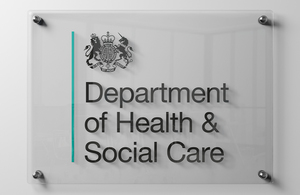Better integrated care could save the NHS millions
The NHS could save millions and provide better care by involving more Allied Health Professionals such as podiatrists in patient care.

Physiotherapists, dietitians, podiatrists, speech and language therapists and other Allied Health Professionals can have a dramatic impact on care for people with diabetes, cancer, musculoskeletal problems and stroke survivors.
- Using podiatrists to help treat patients with diabetes can lead to a drop in foot ulcers - a serious complication for diabetics - and distressing foot amputations. There are almost 5,000 leg, foot or toe amputations in England every year - each one costs the NHS around £65,000. Investing in providing integrated foot care and bringing this number down could save the NHS almost £300 million.
- By working together as a team, physiotherapists, speech and language therapists and dietitians can help stroke survivors regain independence faster and leave hospital and go home sooner. This could save the NHS over £7 million every year.
A new series of online tools, launched today, will help the NHS identify how therapists can intervene at different stages of a patient’s condition to improve patient care whilst saving on costs.
Health Minister, Lord Howe said:
“Allied Health Professionals play a critical role in ensuring patients get integrated care so they recover quickly after treatment or can manage a long term condition successfully. Better integration of care is one of the key elements in the Health and Social Care Bill - not only does it improve the quality of patient care, but it can also save the NHS money.
“These online tools highlight some excellent examples of when and how Allied Health Professionals involvement can work and will help commissioners pinpoint opportunities for better integration of care”.
Shelia Stringer, Senior Physiotherapist and service manager at the Royal Wolverhampton Hospital NHS Trust said:
“Although this was developed as a tool for commissioners it is so much more. It is a one stop shop of information and evidence that I hope will promote local discussions amongst all clinicians on how we can improve services for out patients and deliver the savings the NHS needs to achieve.”
Richard Evans, Chief Executive of the Society and College of Radiographers said:
“AHPs in all their diversity have a vast amount to offer any healthcare system. In the UK it is it is very important that those who buy healthcare for patients fully understand what AHPs can provide in terms of improving the quality of care. “
The online tools provide case studies and examples from local NHS services who have made changes to services to optimise savings whilst ensuring the best quality of care for patients. Salford Royal NHS FT reorganised their foot care pathway for people with diabetes which included annual screening, a preventative foot care service for patients and education programmes making a potential saving of more than £1 million over four years. The Stroke REACH Early Discharge Scheme (Stroke REDS) in Camden, London was developed to provide seamless transfer of care from the hospital to the patient’s home reducing the average length of stay in hospital leading to a potential £307,000 in acute bed day costs.
Notes to Editors
For further information, please contact the Department of Health press office on 020 7210 5221.
Full list of Allied Health Professionals:
Physiotherapy, speech and language therapists, art, music and dramatherapists, paramedics, orthoptists, orthotists and prosthetists, occupational therapists, dietitians, diagnostic and therapeutic radiographers.
The toolkits can be found on the NHS Networks website.
Case Studies from the toolkits
- Up to 4800 people with diabetes undergo leg, foot or toe amputation each year in England, which are probably preventable. Salford Royal NHS FT reorganised their foot care pathway for people with diabetes, which included annual screening, a preventative foot care service for patients and education programmes run by the staff. Their programme resulted in a 16% fall in number of amputations per 100,000 and number of foot ulcers fell from 900 (2006) to 600 (2010) making a saving of more than a million over four years.
- Over 130,000 people have a stroke or mini-stroke each year and at least 300,000 people a year living with moderate to severe disabilities as a result of stroke. Rehabilitation after a stroke is vital to ensure the survivor regains as much independence as possible. The Stroke REACH Early Discharge Scheme (Stroke REDS) in Camden, London was developed too meet the needs of Camden stroke survivors. The early discharge scheme (EDS) aimed to provide seamless transfer of care from the hospital to the patients home. The team made up of professionals who specialise in stroke rehabilitation include speech and language therapist, physiotherapists and dieticians; provide care and support to ensure the stroke survivor regains as much independence as possible. From January 2009 to December 2009 the team had discharged and rehabilitated 57 in 12 months reducing the average length of stay in hospital by 10 days leading to a potential £307,000 in acute bed day costs.
- Malnutrition costs the UK health economy around £13 billion every year. Improving the identification and treatment of malnutrition is estimated to have the third highest potential to deliver cost savings in the NHS.
Two NHS Trusts in London have changed the way they work to reduce the number of patients suffering from malnutrition. Both Outer North East London Community Services and NHS East London and the City employed new specialist dieticians to change the way patients at risk of malnutrition are treated and make sure that nutritional supplements are more appropriately prescribed.
Better and more appropriate treatment for patients at risk of malnutrition has meant the NHS in London have saved an additional £2 million.